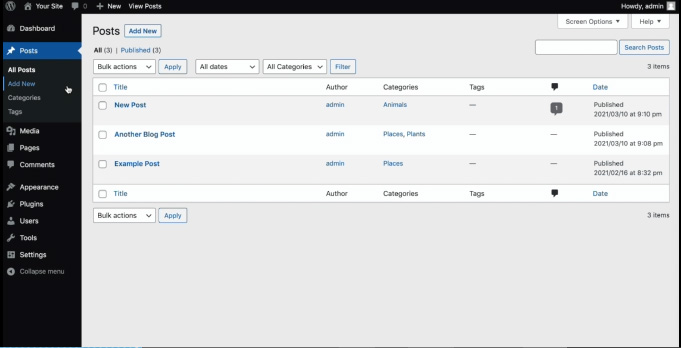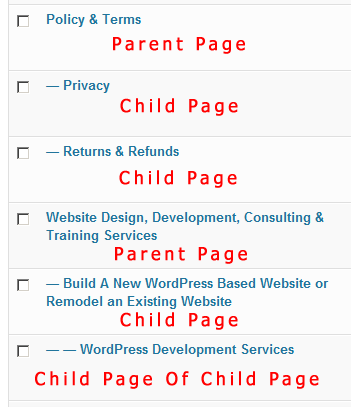
In the process of developing and maintaining WordPress based websites for myself and clients, I’ve encountered a wide array of content. Knowing how to organize that content properly will result in a site that is easier to manage, easier for visitors to locate the content they are looking for and improve search engine visibility.
WordPress features both Posts (organized by categories) and Pages (organized by hierarchy). This structure can confuse new and experienced users alike, so I’ve put together this overview.
Ways that WordPress Posts differ from WordPress Pages:
- Posts are organized in categories as well as, tags, author p[ages, and archives
- Posts can display either individually or in lists (one atop another)
- They are time sensitive (relevant to when they were written)
WordPress Pages are time insensitive and hierarchical in nature. Pages will contain the content used to present the concept of a website; much like HTML pages in a standard, non-dynamic website.
Ways that WordPress Pages differ from WordPress Posts:
- Pages exist outside of the blog’s chronology
- They are generally time insensitive and don’t get updated often
- Pages don’t use categories
- They can be organized in a hierarchy
- They can be ordered in an arbitrary manner
- Pages can use custom page templates
WordPress blog posts, or posts are time sensitive pieces of information which get listed in your site’s “chronology”; typically the front page, category pages, archive pages as well as tag and author pages.
[wpmudev-video video=”pages-v-posts”]When to use Posts or Pages in WordPress based websites
The simplest way to approach when or when not to place content in posts is to determine how often you will be updating the content and how much content you will have. Since posts are arranged in categories, they are ideal for large amounts of relative (repetitive) information like: Portfolios, Newsletters, Running Blogs, Reviews, General Resources, Products, Articles and just about any other “category” of content in your WordPress website.
Pages are ideal for static, non-repetitive content such as Services, About, Contact, Bio, Thank You pages and any other type of content that isn’t frequently updated or needs to be displayed solely by itself (not one atop another).

Another important consideration when choosing posts or pages deals with backend management. Pages are hierarchical using parent and child to define the relationship with other pages. In the backend pages are listed chronologically with child pages displayed beneath their parent page indented with an Mdash and each subsequent child page will be indented with an Mdash.
The WordPress “Pages” admin area only lists 20 pages/titles at a time, making it difficult to manage parent pages with more than a few child pages. Posts, on the other hand, are much easier to manage in bulk because they can be sorted chronologically or by category.
In summary: WordPress Posts are best used for large amounts of time sensitive content that can be organized into categories. WordPress Pages work well when used for time insensitive, static content that can be arranged in limited hierarchies.
Share Your Two Cents